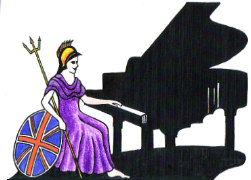Teachers, Accompanists and Piano Entertainers in the UK

UK Piano Page

Enfield
Enfield, London
England
I tune pianos all over London, in your home, for live gigs or recording studios. Happy to offer piano-related advice.
Enfield, London EN2 0DP
England
I am a very patient, experienced and friendly teacher who comes to your house. I have been teaching the piano for over 20 years, and I teach at ...
83 Southbury Road
Enfield
Enfield, London EN1 1PJ
England
Digital Piano, Upright & Grand Pianos, Rent-to-Buy and Interest Free UK Pianos is a specialist piano retailer in the UK offering for sale a large ...
273 Sauchiehall Street
Glasgow, Lanarkshire G2 3HQ
Scotland
Biggars Music, established in 1867, is Glasgow's
266 Clyde Street
Glasgow, Lanarkshire G1 4JH
Scotland
Mclaren's is Glasgow's newest piano superstore
3 Canal Street
Paisley, Renfrewshire PA1 2HD
Scotland
P. S. Pianos. A specalist piano shop. Being a
117 Narborough Rd
Leicester, Leicestershire LE3 0PA
England
Keysound Looking for music shops in Leicester? We
Unit 15, Witham Point
Wavell Drive
Lincoln, Lincolnshire LN3 4PL
England
We are dedicated piano specialists in Lincoln and
Music Festival for performers and guests Our 10th
18-06-2022 12:30PM
The Morecambe Bay Piano Group was set up to extend
11-12-2021 01:00PM
The Morecambe Bay Piano Group was set up to extend
08-01-2022 01:00PM
The Morecambe Bay Piano Group was set up to extend
12-02-2022 01:00PM